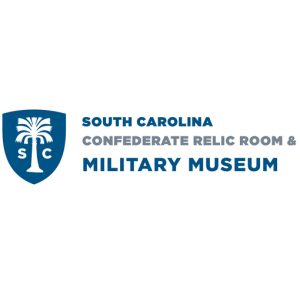Lecture at Richland Library on Aug. 16 to tell of ‘The Unpronounceable Patriot’
August 5, 2024The longest battle of the American Revolution happened in South Carolina. That was the Siege of Ninety-Six. One Patriot played a large role in that episode: Tadeusz Kosciuszko.
Who? You can learn all about him by attending a free lecture at noon on Aug. 16 at the Richland Library main location in Columbia. Joe Long, curator of education at the South Carolina Confederate Relic Room and Military Museum, will tell all about “The Unpronounceable Patriot: Thaddeus Kosciuszko.”
The lecture is part of the museum’s regular Noon Debrief program. Those lectures are usually presented at the Relic Room itself, but since the museum is undergoing renovation, the nearby library has generously offered a venue for the program off-site. Joe will speak in the library’s Theater. This will be his second program this summer at the library – he spoke on June 28 about American POWs during the Vietnam War.
Kosciuszko is a particularly interesting figure. Born in 1746, he was a Polish engineer, statesman, and military leader who ultimately became a national hero in Poland, the United States, Lithuania and Belarus. For his contributions to the American cause, he is a particular hero to Polish Americans, rather as Christopher Columbus is to Americans of Italian heritage.
He was a siege engineer, and that was his role at Ninety Six. From May 22 to June 18, 1781, Continental Army Major General Nathanael Greene led 1,000 troops in a siege against 550 Loyalists in the fortified village of Ninety Six, S.C. The 28-day siege centered on an earthen fortification known as Star Fort – which it was Kosciuszko’s job to supervise the digging that would enable the Patriots to take the Loyalist stronghold.
He failed, due to a number of factors, but the Patriot commanding officer on the scene, Major-General Nathanael Greene, commended Kosciuszko’s efforts in carrying out his orders, noting that given more time, his chief engineer’s plan might well have succeeded.
That was just the start of a spectacular career for Kosciuszko. Among other things, he:
- Designed fortifications at West Point, New York. Remember Benedict Arnold, who betrayed the new nation by giving plans to the British to help them take West Point? Those plans were Kosciuszko’s.
- Was a personal friend of Thomas Jefferson, who called him “the purest Son of Liberty I have ever known.”
- Lived after the Revolution in a house in Philadelphia, which today is our smallest national park.
- Was later Poland’s own George Washington – almost. He led what historians call the Kosciuszko Uprising in 1794. It was an attempt to liberate his country from Russian and Prussian influence. But it was unsuccessful.
“This story has everything, from star-crossed lovers and poetry, to smart remarks by Ben Franklin,” says Joe Long. Come hear him say much more on Aug. 16.
About the South Carolina Confederate Relic Room and Military Museum
Founded in 1896, the South Carolina Confederate Relic Room and Military Museum is an accredited museum focusing on South Carolina’s distinguished martial tradition through the Revolutionary War, Mexican War, Civil War, Spanish-American War, World Wars I and II, Vietnam, the War on Terror, and other American conflicts. It serves as the state’s military history museum by collecting, preserving, and exhibiting South Carolina’s military heritage from the colonial era to the present, and by providing superior educational experiences and programming. It recently opened a major new exhibit, “A War With No Front Lines: South Carolina and the Vietnam War, 1965-1973.” The museum is located at 301 Gervais St. in Columbia, sharing the Columbia Mills building with the State Museum. For more information, go to https://crr.sc.gov/.


















